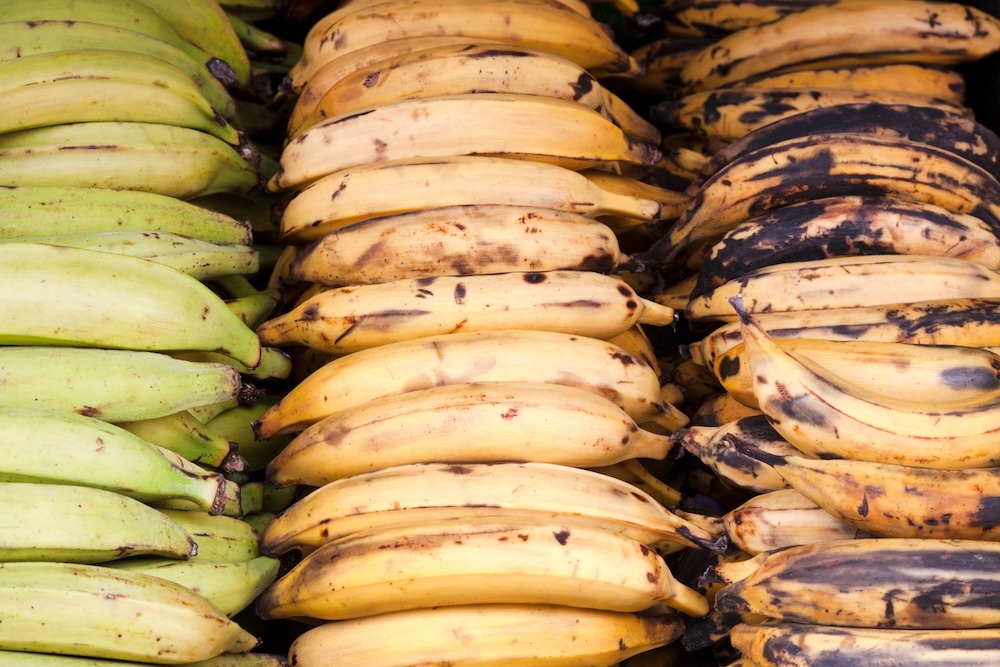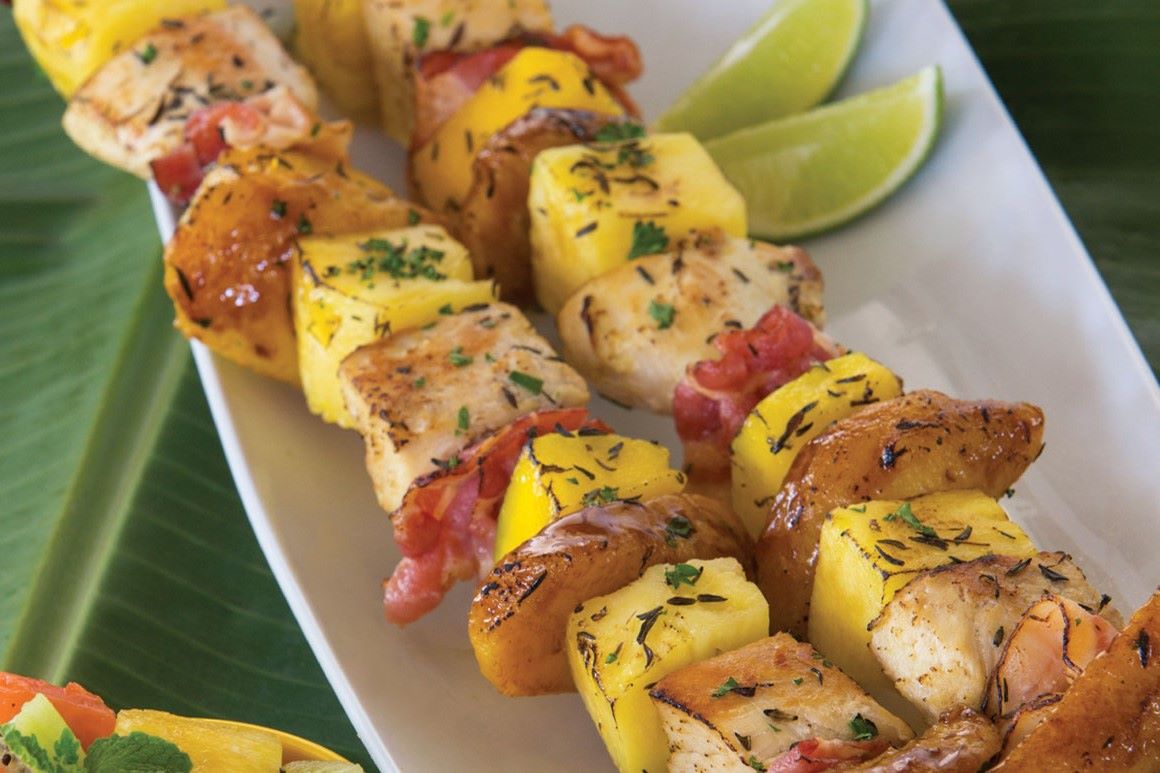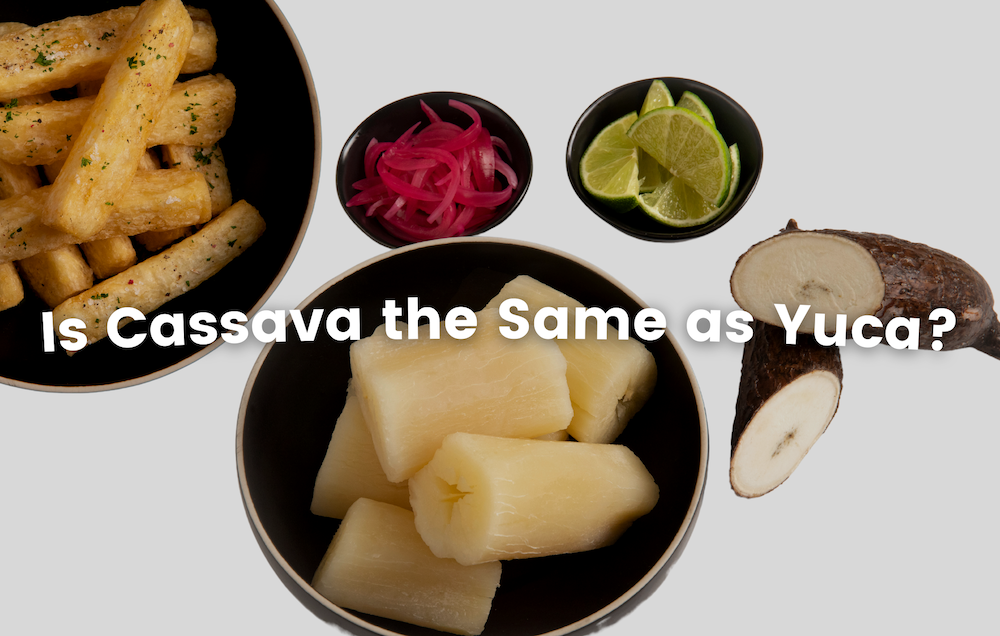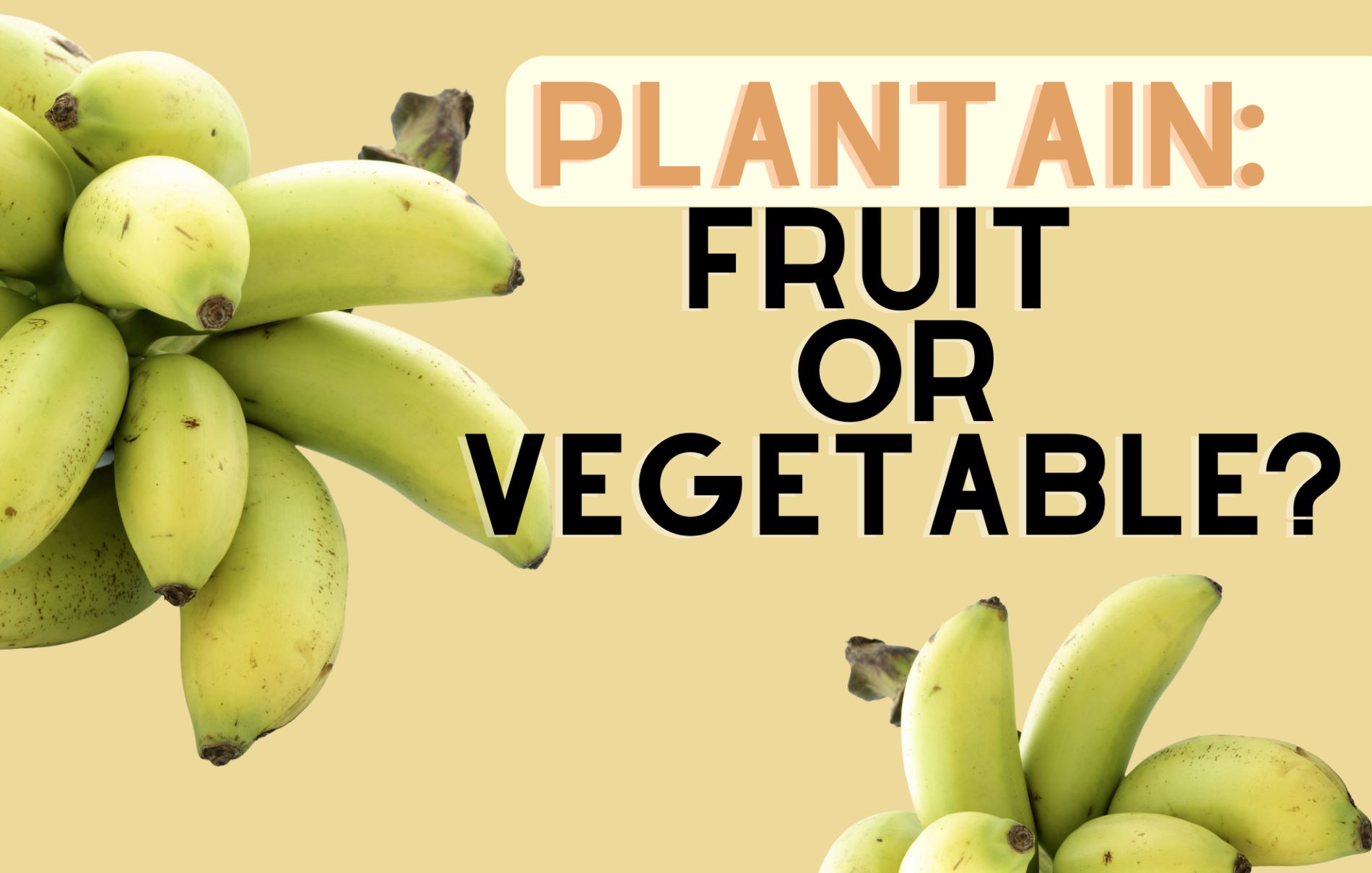Everything You Ever Wanted or Needed to Know About the Plantain

Plantains: the versatile cousin of the banana that often gets overshadowed in the spotlight. But don’t let their unassuming exterior fool you! These starchy, slightly sweet fruits have been a staple in cuisines around the world for centuries. From savory to sweet dishes, from snacks to sides, plantains pack a punch in both flavor and nutrition. At MIC Food, we’re here to bring you everything you need to know about this underappreciated gem, from its history and health benefits to culinary uses and the various ways you can incorporate them into your meals. Let’s dive in and explore why the plantain deserves more attention in kitchens everywhere.
What Are Plantains?
Plantains are often mistaken for bananas, but they couldn’t be more different. While they come from the same family of plants, plantains are larger, thicker, and starchier, making them a more versatile ingredient in savory dishes than bananas. They’re also not typically eaten raw. Instead, plantains are cooked in various ways and often found in dishes that are crispy, crunchy, or even sweet. For this reason, it is sometimes called the cooking banana.
Plantains grow on large tropical plants, closely related to the banana plant. They thrive in warm climates and are grown extensively in regions like West Africa, Latin America, the Caribbean, and parts of Southeast Asia. They come in a variety of colors and ripeness stages, each offering different flavors and textures.
In many parts of the world, plantains are used much like potatoes, adding texture and heartiness to meals. From breakfast to dinner and everything in between, plantains are a true kitchen workhorse.
Plantains vs. Bananas
Though plantains and bananas share a similar origin and appearance, they are quite different in terms of taste, texture, and culinary use. Understanding these differences can help you appreciate each fruit for its unique qualities and make the most of them in your cooking.
Taste and Texture
The primary difference between plantains and bananas lies in their taste and texture. While bananas are soft, sweet, and typically eaten raw, plantains are starchy, firm, and less sweet. Unripe plantains are green and contain more starch than their banana counterparts, making them ideal for cooking in savory dishes. As plantains ripen, they become sweeter, but they still retain a denser, meatier texture than bananas. This makes plantains better suited for frying, baking, or boiling, as they hold their shape and provide a more substantial texture compared to bananas, which become mushy when cooked.
Culinary Uses
Bananas are often used as a snack or dessert ingredient, making them perfect for smoothies, baked goods, or eaten on their own. On the other hand, plantains are typically cooked and are found in a variety of savory dishes across many cultures, especially in West Africa, Latin America, and the Caribbean. Green plantains are commonly fried into tostones, boiled, or mashed for side dishes. Yellow and black plantains, with their increasing sweetness, are great for making maduros (sweet fried plantains) or incorporated into stews and casseroles.
Nutritional Differences
Both plantains and bananas are nutrient-rich, but they offer slightly different nutritional benefits. Bananas are high in natural sugars, such as glucose, fructose, and sucrose, which provide quick energy. They are a great source of potassium and vitamin B6. In contrast, plantains offer more fiber, especially when unripe, and provide a slower, more sustained energy release due to their high starch content. Plantains are also rich in vitamins A and C, making them beneficial for immune support and skin health.
The Different Types of Plantains
Plantains are as versatile as they are unique. Depending on the ripeness of the plantain, it can be used in different ways, ranging from savory dishes to sweet desserts. Here’s a breakdown of the different types of plantains and how to use them:
- Green Plantains – These plantains are unripe and firm, much like a potato. They have a neutral flavor that makes them ideal for savory dishes. Green plantains are often sliced and fried to create crispy treats like tostones (fried plantain chips), or boiled and mashed to make a delicious side dish. When you want a starchy base that can soak up sauces or add structure to a dish, green plantains are your go-to.
- Yellow Plantains – When plantains ripen to a yellow color, they begin to develop a slight sweetness, but they still hold their firm texture. These plantains are perfect for dishes that require both sweetness and a firm bite. Think plantain fritters, or simply fried until golden for a tasty side dish.
- Ripe (Black) Plantains – As plantains fully ripen and turn black, they become incredibly sweet and soft, making them perfect for dessert-like dishes or recipes that highlight their natural sweetness. Don’t worry about over-ripeness—this stage is ideal for creating sweet plantain dishes like maduros (sweet fried plantains), plantain bread, pies, or even blending them into smoothies. Their soft texture and heightened sweetness make them a versatile ingredient for both baking and cooking, adding a delightful flavor to cakes, pies, or as a sweet addition to any meal.
Common Plantain Preparation and Cooking Methods
So, now that you’ve got your hands on some plantains, how do you cook them? The good news is, plantains are incredibly easy to work with and can be prepared in a variety of ways. At MIC Food, we make it easier by offering IQF (individually quick frozen), ready-to-cook plantain products, but if you’re cooking fresh plantains, here’s how to get started:
Peeling Plantains
The first step is to peel your plantain. Plantains have thicker, tougher skin than bananas, so you may need a sharp knife to make a slit along the length of the plantain. Then, use your hands or the knife to peel back the skin. Green plantains tend to be more difficult to peel, so make sure you cut all the way through the skin before trying to remove it.
Popular Cooking Methods
- Frying: Frying plantains is one of the most common ways to enjoy them. Whether you’re making crispy tostones (twice-fried plantains) or sweet maduros (fried plantains), frying plantains is a delicious way to bring out their natural flavor. Simply slice your plantains and fry them in hot oil until golden and crispy. For tostones, press the slices flat before frying them a second time for extra crunch.
- Boiling: For a softer, more subtle flavor, boiling is a great method. Simply peel and chop your plantains, then boil them in water until they’re tender. Boiled plantains can be mashed for a classic side dish or served as a base for other dishes.
- Baking: If you’re looking to add a bit of depth and caramelization, baking plantains is a great option. Place sliced plantains on a baking sheet, drizzle with oil (or butter), and bake until golden brown and tender. Baked plantains are perfect for serving alongside meats or adding to a plantain casserole.
- Grilling: For a smoky, savory flavor, grilling plantains is another fantastic option. Slice the plantains and grill them until tender with char marks, perfect for a summer barbecue or a vibrant side dish.
Health Benefits of Plantains
Plantains aren’t just delicious—they also pack a serious nutritional punch. Here’s why plantains are a great addition to your diet:
Nutritional Profile
Plantains are an excellent source of several key nutrients. A typical serving of plantains is rich in:
- Potassium: Plantains are high in potassium, which is essential for maintaining proper heart and muscle function.
- Vitamin A: Plantains contain significant amounts of vitamin A, which supports eye health and boosts immunity.
- Vitamin C: A powerful antioxidant, vitamin C helps protect the body from oxidative stress and supports skin health.
- Fiber: Plantains are rich in fiber, which aids in digestion and promotes a healthy gut.
Plantains for Digestive Health
Thanks to their fiber content, plantains are excellent for digestive health. They help regulate bowel movements, alleviate constipation, and promote overall gut health. The resistant starch in plantains also feeds the beneficial bacteria in your gut, making them a great prebiotic food.
Sustained Energy
Because plantains are rich in complex carbohydrates, they provide a slow and sustained release of energy, making them an ideal choice for anyone needing an energy boost that lasts throughout the day.
How to Incorporate Plantains Into Your Diet
Now that you know all about plantains, how do you actually incorporate them into your daily meals? The possibilities are endless:
- Breakfast Options: Start your day with plantain-based breakfast options like plantain pancakes, or serve them as a side with eggs and bacon. You can also add plantains to smoothies for a sweet and creamy texture.
- Lunch & Dinner: Try plantains as a side dish, mashed or sliced. You can also get creative and use plantains as the base for stews, curries, or savory casseroles. For example, combine sautéed plantains with onions and peppers for a tasty side, or make a hearty plantain curry.
- Snacks & Sides: Plantain chips are always a crowd-pleaser. Simply slice plantains thinly and bake or fry them for a crispy snack. Or, serve tostones or sweet fried maduros as a snack at parties or gatherings.
- Desserts: Don’t forget about plantains’ sweet side! Use ripe plantains to make sweet plantain cakes, pies, or even ice cream. The natural sweetness of plantains makes them a great substitute for sugar in many dessert recipes.
Plantains in Different Cuisines
Plantains are a beloved ingredient in many cultures around the world, each with its own way of using the fruit. Here are some examples of how plantains are used globally:
- Caribbean Dishes: From mofongo in Puerto Rico to tostones in the Dominican Republic, plantains are central to many Latin American cuisines. In Cuba, fried plantains (maduros) are often served with rice and beans.
- West African Cuisine: In countries like Nigeria, plantains are often fried or boiled and served alongside stews and rice.
- Latin American Flavors: In Latin American cuisine, plantains are a versatile staple featured in dishes like Honduran tajadas, thinly sliced and fried plantains served with refried beans or meat, and Colombian patacones, crispy green plantain slices topped with savory ingredients. In Venezuela, plantains shine in pabellón criollo, the national dish, where sweet fried plantains (maduros) complement shredded beef, black beans, and rice.
- Asian Influence: In parts of Southeast Asia and India, plantains are used in savory curries and fritters.
Plantains and Sustainability
Plantains are a sustainable crop that can help feed millions while supporting local farmers. Unlike some other crops that require extensive resources, plantains are hardy and grow well in tropical climates with minimal care. By incorporating plantains into your diet, you’re supporting sustainable agricultural practices and helping local economies thrive.
Frequently Asked Questions About Plantains
- Can plantains be eaten raw?
No, plantains should be cooked before eating. They’re starchy when raw and require cooking to bring out their natural flavor and texture. - How can you tell when a plantain is ripe?
The riper the plantain, the darker its skin becomes. Yellow plantains are great for dishes that need a bit of sweetness, while fully black plantains are very sweet and perfect for desserts. - What’s the best way to store plantains?
Store unripe plantains at room temperature until they ripen, then move them to the fridge if you want to extend their shelf life.
Conclusion
Plantains are far more than just a humble fruit. With their versatility, nutrition, and ability to shine in both savory and sweet dishes, they’re an ingredient that deserves a spot in every kitchen. Whether you’re creating hearty sides, flavorful stews, or delicious desserts, plantains add flavor and nutrition to any meal. At MIC Food, we’re proud to offer high-quality frozen plantain products to make your plantain dishes even easier and more convenient to prepare.
So why not add plantains to your next meal? Explore the endless possibilities and discover why this tropical fruit has been a culinary staple for generations!



